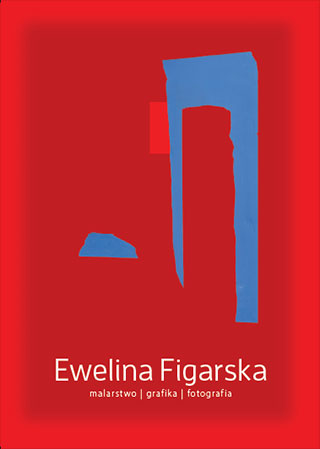 |
|
Ewelina Figarska »
malarstwo grafika fotografia


Space talks
Ewelina Figarska tries to express herself in various artistic
disciplines, however, she cherishes painting most. This is
where she expresses herself to the fullest, and this is where
her perception of space is most strongly visible.
For the artist, paintings are like living creatures, preserving
various experiences, and at the same time they reflect
the inner melody that originates from man. This specific
relationship is the source of mystery, and according to the
artist painting acquires almost sacred power. In the play
with the viewer it is essential to create a metaphysical
atmosphere, which is sometimes present both in pictorial
motifs (as in her staged photographs) and in special
relations of artistic means of expression in painting.
In her artwork abstract notions are expressed not by
symbolic forms, but by mood, play with planes, relations of
colours or light. The real objects that constitute the source
of the images take on the shape of colourful planes, among
which there are suggestive, barely allusive shapes. The artist
first tries to evoke a general feeling resulting from the form,
its specific experience, and then a realistic image of space,
consistent with our life experiences.
Ewelina Figarska shows a tendency to simplify and
synthesize, as can be seen in her graphic works, in the
world of which she is looking for an appropriate equivalent
for her feelings. What strikes us in her woodcuts is the
spontaneity and sketchiness of depiction, and in her
lithographic Madonnas the departure from copying
culturally fixed iconographic patterns. Here the sacred is
hidden in a mystery, an understatement, austerity of means
of expression.
Small images refer to the form of assemblage, evoking
echoes of the matter painting tradition. The prepared rough
substrate has been covered with subtle signs, creating
references to something hidden, incomprehensible, which
is primordial and not yet woven with a net of conventional
references. The works embody a desire one of the most
important feelings for the artist, for which it is difficult
to find a pictorial representation, except for trivialized
anecdotes. The artist surrenders to the instinct where one
cannot yet rely on speculation.
In large painting works, fragments of pictorial references
appeal to our impressions or emotions that allow us to keep
the space image in our memory. Visual elements come
from observation; shapes that embody the remembered
phenomena appear. They become the source of our
associations and subjective feelings.
The painting becomes an experience. It is not only a set
or construction of architectural elements, the relations
between their size and characteristic, rationally perceptible
attributes, but also a set of other, non-rational phenomena.
Ewelina Figarska makes it possible for us to some extent
to unveil the subsequent stages of creation, also to
deconstruct the space, to find further possibilities to read
the image, to build various meanings.
Thus, the artist does not express herself in painting by
using realistic means, but by composing an arrangement of
colourful elements, focused around a palette of greys, blues
and browns, a contrast of warm and cool tones. In life, we
often construct a vision of space, referring to the general
colour note, to the character of light, and sometimes even
just to the smell or memorable sounds. Thanks to this
we can recognize it and, what is more important, embed
events, emotions and experiences in it. The artist draws us
into the space she has created. By facing her own emotions,
which she endows with a visual form, she encourages the
viewer to talk about their impressions provoked by visual
associations, including those that do not function in the
space of a visual concrete, but in the deeper layers of our
emotional memory.
It becomes clear that man is important for the artist, even
though he is not always present in the explored space.
A human figure as an imagery motif has appeared in her
staged photographs and graphics. On the one hand, people
attached to certain conventions, traditions or fashions seek
closeness, and on the other hand, they isolate from each
other, building a wall around them which is made up of
shyness, prudence or fear of the consequences of dropping
the mask off.
The human figures that appear in the non-painting
manifestations by Ewelina Figarska, occupying the same
space (as in the family), actually function in different worlds.
Man is not even able to see himself (in the mirror he sees
only his reflection an illusion). Of course, he has some idea
of himself, but it is only a subjective construct; in relation
with others, we also usually show up as a kind of creation,
usually consistent with what we think of ourselves, or how
we want to be perceived by others. Hence the human
beings confusion, which is expressed in many ways in
this artwork. The images of human figures are sketchy,
simplified, incomplete. Eventually, man disappears as
a pictorial motif from the realm of the depicted world. What
remains is space, preserving the memory of his experiences
and emotions.
Ewelina Figarskas artwork has been yet another artistic
attempt to define the relation between reality and the
image created in art, an attempt to answer the question
what is the boundary separating the truth from illusion,
both in art and in the space of our existence.
Dariusz Leśnikowski
Transl. Elżbieta Rodzeń-Leśnikowska

 KATALOG
KATALOG
|
|
|
 |










